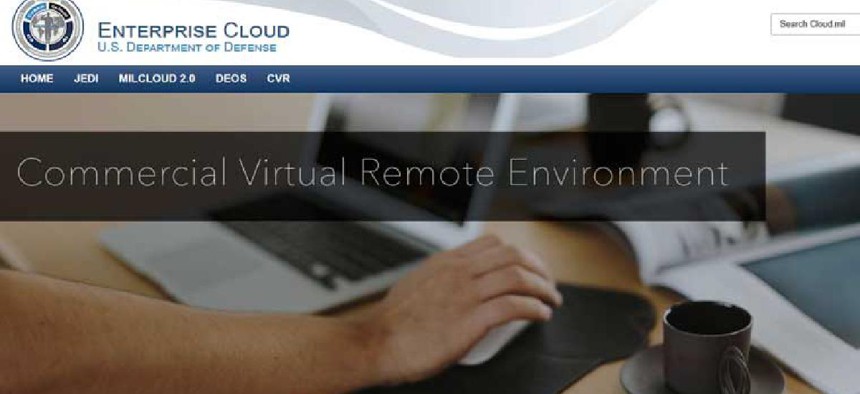
Culture, leadership are keys to DOD telework post-COVID
Peter Ranks, the Defense Department's deputy chief information officer for information enterprise, said continued leadership on flexible telework policies were needed to create a "new normal."
The COVID-19 pandemic forced the Defense Department to dramatically and rapidly expand its telework capabilities. Many have cited productivity boosts from teleworking employees, but continuous buy-in from senior leadership will be essential to maintaining DOD's newfound workplace flexibility if and when coronavirus risks wane.
Peter Ranks, the Defense Department's deputy chief information officer for information enterprise, said continued leadership on flexible telework policies were needed to create a "new normal."
"The tools can only do so much here. The other thing we really have to [talk about] in the department is the culture," Ranks said. "We need that continued leadership commitment to a new normal that's going to be a little bit more flexible environment for our workers."
Ranks said that telework has increased productivity for knowledge workers in DOD during a virtual NextGov event on COVID-19 and teleworking July 22, but the remote workplace could shrink once leaders get used to meeting in person again.
But the DOD CIO Dana Deasy has previously indicated that certain capabilities would remain available.
"I think we're looking very hard right now at what we can preserve. There's a handful of things that we specifically want to preserve: number one is that capability to collaborate seamlessly across the entire [enterprise] so you're not locked into organizational boundaries elsewhere inside the department," Ranks said.
Others include being able to collaborate from "outside the network perimeter" and incorporating personal devices into the unclassified layer, but Ranks stressed that having the tools available isn't enough.
"Organizational culture is extremely resilient and I do think that there's a chance that in a command and control environment like DOD as soon as the leadership is back holding all their meetings in person that flows quickly through the enterprise," he said.
The positives of telework and its ability to enhance information sharing throughout an organization's ranks has been touted as a positive even in the intelligence community. Gen. Paul Nakasone, the head of the National Security Agency and U.S. Cyber Command, said the changing environment from when video teleconferencing used to be reserved for senior officials to now was "powerful."
"There's a change in the environment," Nakasone said of COVID-19's impact on telework capabilities during an Association of the U.S. Army event July 20.
"Just the simple thing of video teleconferences. Normally that was reserved for general and flag officers and senior DOD officials. The fact that now we have 180 senior enlisted leaders coming up and being able to share information with our sergeant major of the Army. That's powerful."
Nakasone also touted protecting the workforce as a priority for maintaining no-fail mission objectives, encouraging the use of collaboration tools, such as the commercial virtual remote environment, DOD's version of Microsoft Teams.
Ranks said remote classified work was previously focused on niche problems and expanding it was a challenge that required teaming up with NSA to get shared awareness of secret-level work from home programs and arrangements.
"The classified side was harder," he said, comparing it to the nearly 1 million users of the Commercial Virtual Remote environment or DOD's version of Microsoft Teams. "Producing the devices for classified remote work -- that is high touch in person labor. It was difficult to scale that in a safe way in order to meet the demand."
This article first appeared on FCW, a Defense Systems partner site.
NEXT STORY: Senate passes 2021 NDAA with veto-proof majority
